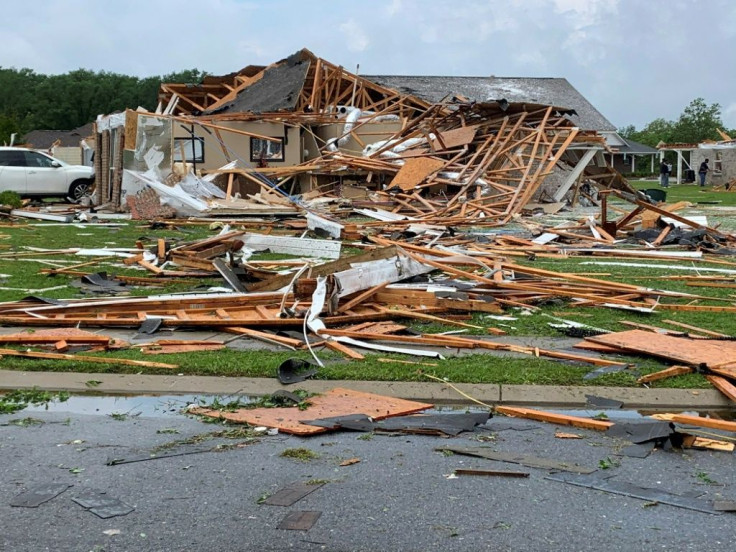Extreme Weather 2021: Dangerous Tornadoes To Hit Arkansas, Alabama
Meteorologists are warning that the mid-South could be in for severe tornadoes this week, with an especially dangerous period Wednesday afternoon through Thursday. Tornadoes have been coming earlier in the year and hitting less-prepared areas, CBS News reports.
NOAA issued its maximum warning Wednesday morning, rating Louisiana and Arkansas as “high risk” for the afternoon. The weather system is expected to move into Mississippi and Alabama in the evening.
It’s the first “high risk” warning issued since 2012. Those following weather trends have been expecting this, with a strong La Nina event ongoing in the Pacific likely to exacerbate storm risk. It also continues the trend of earlier and more intense tornado seasons in recent years. The season has moved up almost two weeks since the 1970s.
La Nina is still going strong in the tropical Pacific Ocean. So what does that mean for spring severe weather season? Here are some figures from @JTAllen3 @mkTippett @profadamsobel 2015 paper. Red = more tornadoes in La Nina years, blue = less in El Nino. https://t.co/K1AaxMbNLk pic.twitter.com/JDpQ1lP0n4
— Jeff Berardelli (@WeatherProf) March 16, 2021
It’s also been accompanied by a geographical shift. Tornadoes are appearing less in the Tornado Alley area and appearing more in the unprepared mid-South, racking up fatalities in the process.
An outbreak of 41 tornadoes in Alabama and Georgia killed 23 people in 2019. In 2020, 25 were killed by 15 tornadoes in Tennessee.

There are a variety of reasons for this: Mid-South tornadoes are more likely to occur at night, which pairs with hilly, forested geography and rain-inducing humidity to make them harder to spot early.
The area is also more densely populated than Tornado Alley, and buildings are less likely to be constructed with severe weather in mind. Recent tornadoes are less likely to appear individually and more likely to occur in dangerous outbreaks, with multiple twisters tearing through an area at the same time.
While scientists are still working to pin down what exactly is driving the trend, climate change is a clear culprit. Meteorological models predict that changing weather patterns will cause the exact phenomenon seen now: fewer tornadoes in Tornado Alley and more dangerous tornadoes in the mid-South.
Need a quick overview of today's severe weather threat? Check out this video to get the latest details (Information is valid as of ~9:30 AM CDT.) pic.twitter.com/J5coQcHnOJ
— NWS Storm Prediction Center (@NWSSPC) March 17, 2021
© Copyright IBTimes 2025. All rights reserved.





















